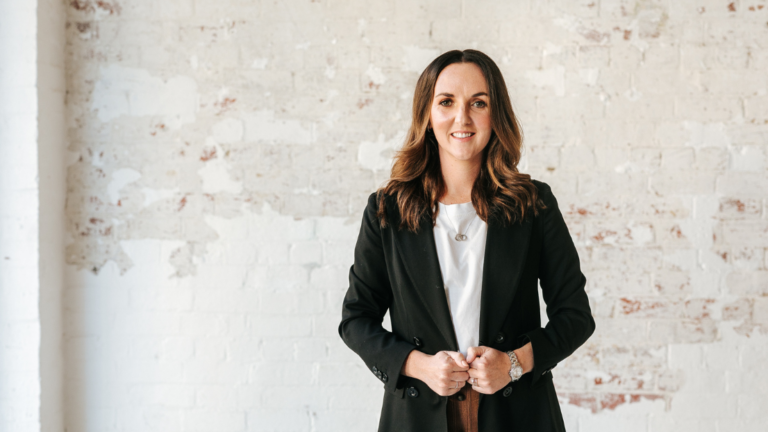Has influencer marketing lost its influence in 2023?
Over the last 5 years, influencer marketing has exploded, and the industry is booming – big time.
According to recent stats released by Influencer Marketing Hub, the global industry has grown from $1.7 billion in 2016 to a considerable $16.4 billion industry in 2022. And this is forecast to soar to a whopping $21.1 billion in 2023.
However, from a consumer perspective, it’s hard to deny there is a collective sense of ‘influencer fatigue’ in a market saturated with paid promotions, #ads and collaborations.
Sponsored posts are flooding feeds and consumers are tuning out and craving authentic content.
So where does this leave brands in 2023? Is influencer marketing the right direction given the relative saturation and consumer discontent?
Is the ROI still worthwhile? And how can marketing professionals pivot their approach to deliver more potent conversions for brands?
If we look at anecdotal evidence, and through our experience as an Australian influencer marketing agency, we can say with confidence the market is going through some growing pains.
But do we see influencer marketing losing its shine? Not one bit, quite the opposite.
The Made Great team have observed the universal shift and are helping the brands we work with adapt their strategies, adjust their influencer campaigns and evolve the types of influencers they choose to work with.
There’s also an ethical lens to consider. Influencer marketing now goes beyond the metrics, and it’s important to ask what’s the corporate responsibility of brands in who they source to be their ambassadors – what’s the ethical role here? What message is this sending the market and how are these decisions positively or negatively shaping your brand image?
In this blog, we’ll be taking a deep dive into the 2023 influencer marketing landscape and share our views and advice for brands to get the best bang for their marketing buck.
Authenticity is in
There has long been debate about the micro versus macro influencer and what kind is the best for brand awareness and sales.
However, the conversation has shifted in these last 12 months. Authenticity is in, and salesy, over produced, staged promotions are on the out – no matter the size of the influencer’s following. Which is why the content creator is starting to rein supreme.
In a saturated market, authenticity is absolutely crucial for brands to make an impact and cut through the noise online.
What we’ve found from our experience working on national influencer campaigns, is consumers are more likely to trust influencers who have a genuine passion for the brand and its products or services.
However, many of the bigger players in the 500,000 followers+ club have, and perhaps unintentionally, positioned themselves out of being truly authentic.
They’re now at the peak and have management who handle business on their behalf. And in recent years, for many cases it has become a transactional agreement rather than a genuine partnership. This can sometimes leave a sour taste for brands and influencer agencies, alike.
Consumers are also finding it much harder to relate to the overly polished, particularly in these uncertain economic times when they are seeking authentic connection.
Moving forward, there is a real power in hyper authenticity. The raw, the real. Content that people can connect and relate to.
This is why many brands are turning their strategies toward content creators – individuals with a smaller but highly engaged following on social media, which are typically better at telling more compelling stories, while being more cost-effective and provide better engagement rates for brands.
Influencer Marketing Hub’s recent research report found there is currently a strong preference for working with small (nano – 39% and micro – 30%) influencers ahead of the more expensive macro-influencers (19%) and celebrities (12%).
And we’re already seeing this shift play out in the market.
In a recent case, global motor corporation Nissan sought out 1500 TikTok influencers to promote its new electric vehicle range Ariya using a filter where influencers needed to correctly pronounce the name of the range. It was raw, unfiltered, and inclusive. A great example of brand-building with a far-reaching campaign leaning on influencers authenticity and genuine following.
Optimising outcomes with a custom brief and contract
Next up – we can’t stress enough; it’s more important than ever before to optimise your campaign outcomes with a custom influencer brief.
As an ethical influencer agency, we don’t just handle strategy, we create custom briefs and do all the influencer outreach and complex (and time-consuming) back and forth liaising and negotiations for our client influencer activations.
Put simply, brands can’t expect good content if they send a brief that isn’t tailored to the particular influencer and the style of content they are already creating for their audience. It can’t be plug and play, every brief needs to be intentional, strategic and tailored to help you achieve your outcomes.
In addition, you’ll also need to cover all bases with a professional contract.
If you have little experience working with influencers, there is likely to be some blind spots including all the set deliverables you expect from the influencer, deadline, posting times, and creative direction.
You’ll also want to stipulate whether their creatives can be used by you for user-generated content, on your website or other marketing material, so everything is laid out on the table and super transparent.
Another important influencer faux pas many brands do is forget about the exclusivity clause.
Take makeup brand, Tarte’s, influencer trip in January 2023, where it sent 29 influencers and their plus ones on an all-inclusive three-day paid trip to Dubai for the launch of a new foundation line.
This copped a massive amount of backlash online. TikTok creators soon flocked to the platform noticing the influencers were on the trip and still posting about other makeup brands while on location. There was also commentary the trip was ‘out of touch’ and lacking racial diversity.
Intentional by the brand to create some chatter online? Perhaps. But a good reminder there are many factors to consider when prepping your contracts, and an exclusivity clause may be one.
Diversity matters & tokenism isn’t enough
The Tarte influencer trip isn’t the first beauty event to face some criticism.
A 2023 Fenty Australia beauty event also went viral. The conversation was centred on lack of diversity and tokenism at the influencer event. According to influencer attendee accounts, there was only six black women in attendance at the event, which’s sole purpose was to promote Fenty’s 50 shades of foundation.
We, of course, don’t know what happened behind the scenes, whether other influencers were invited to attend and couldn’t make it – but it’s very clear from public perceptions, diversity is essential.
At Made Great, we believe diversity should be a given rather than a box tick and marketing should accurately reflect the society we live in; all people.
This is why it’s important to us to help brands embrace diversity in their influencer campaigns. We connect you with influencers from different backgrounds, cultures, and perspectives and think big about the ethical impact of your campaigns and how they will connect to today’s audience.
This not only allows brands to reach a wider audience but also ensures that their campaigns are inclusive and representative of diverse audiences. It’s 2023 and tokenism isn’t enough friends!
Long-game vs one-hit wonder
Last up, we want to remind you all about the lure of the long-game versus the one-hit wonder content, especially in a potentially saturated market.
From our experience, there is a real value that comes in forming long-term relationships with influencers rather than one-off paid partnerships, as the more authentic, enduring and memorable – the better.
Where possible, brands should consider creating ambassador programs, which typically involve working with a select group of influencers for an extended period.
This allows influencers to become more familiar with the brand and build a stronger connection with their audience.
Research shows consumers need on average 8-12 touchpoints with a brand before they feel a sense of trust to buy from them. With long-term ambassador programs, there is a greater likelihood of sales with repeated partnership. Something food for thought!
Influencer marketing, made great
Influencer marketing has many layers, and we could continue sharing our insights into today’s landscape, but we know you’re a busy business owner or marketing manager and time is of the essence.
If you’d like some expert guidance for your influencer marketing campaigns in 2023, we’d love to book in a time to have a chat with you. Send us an email at [email protected] and let’s get started.



